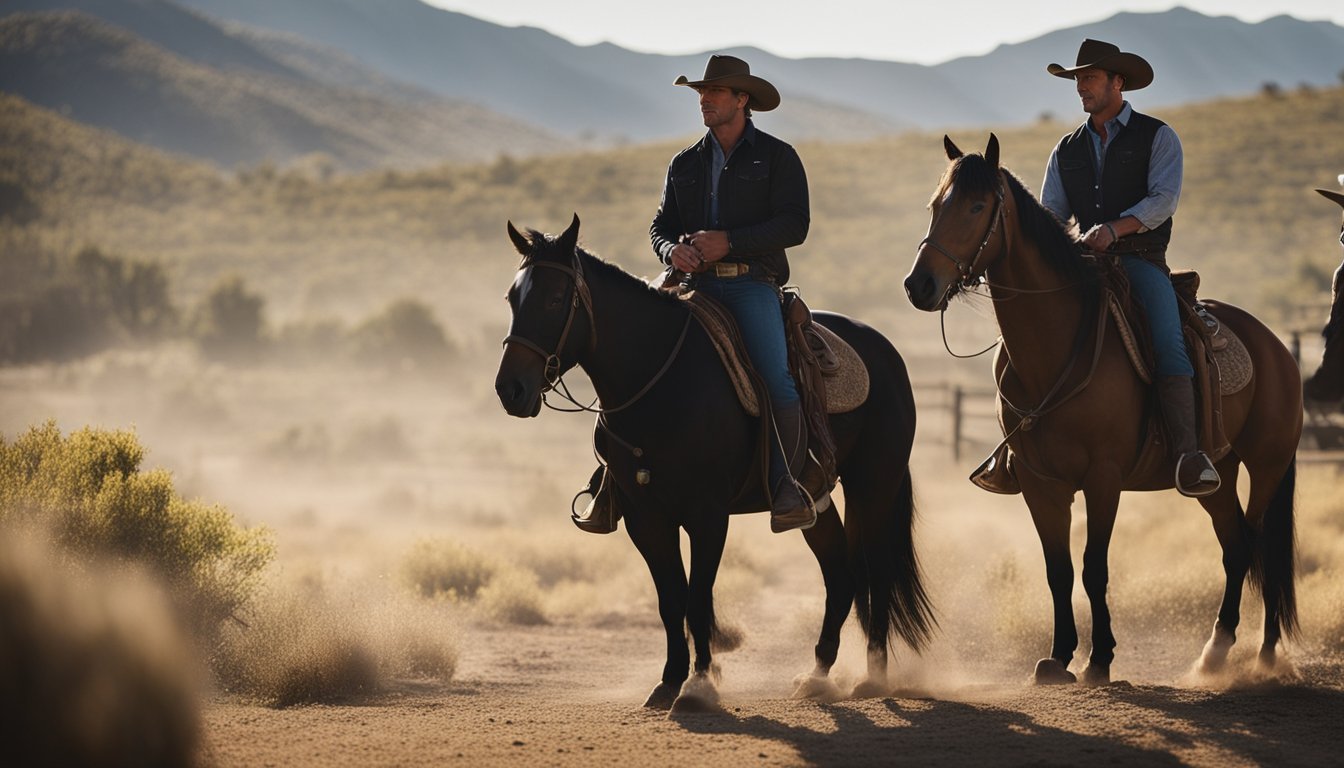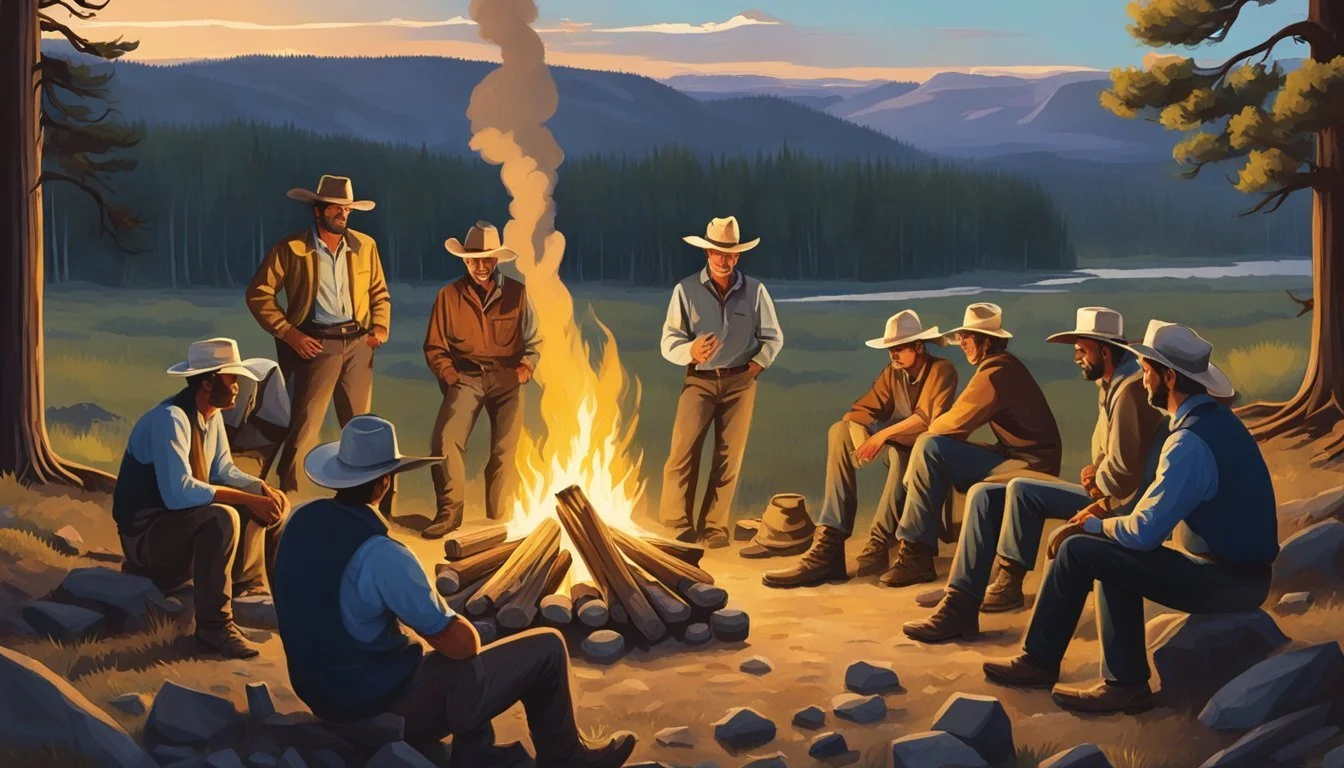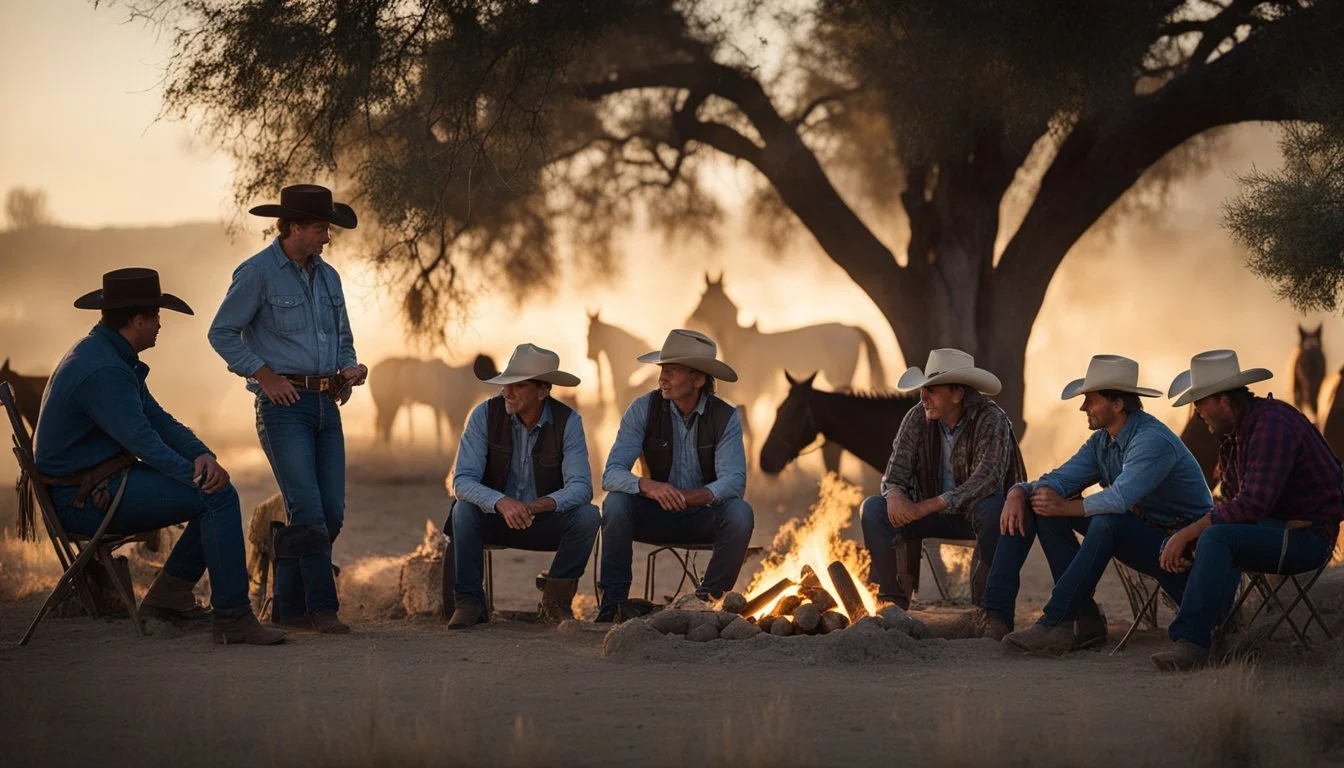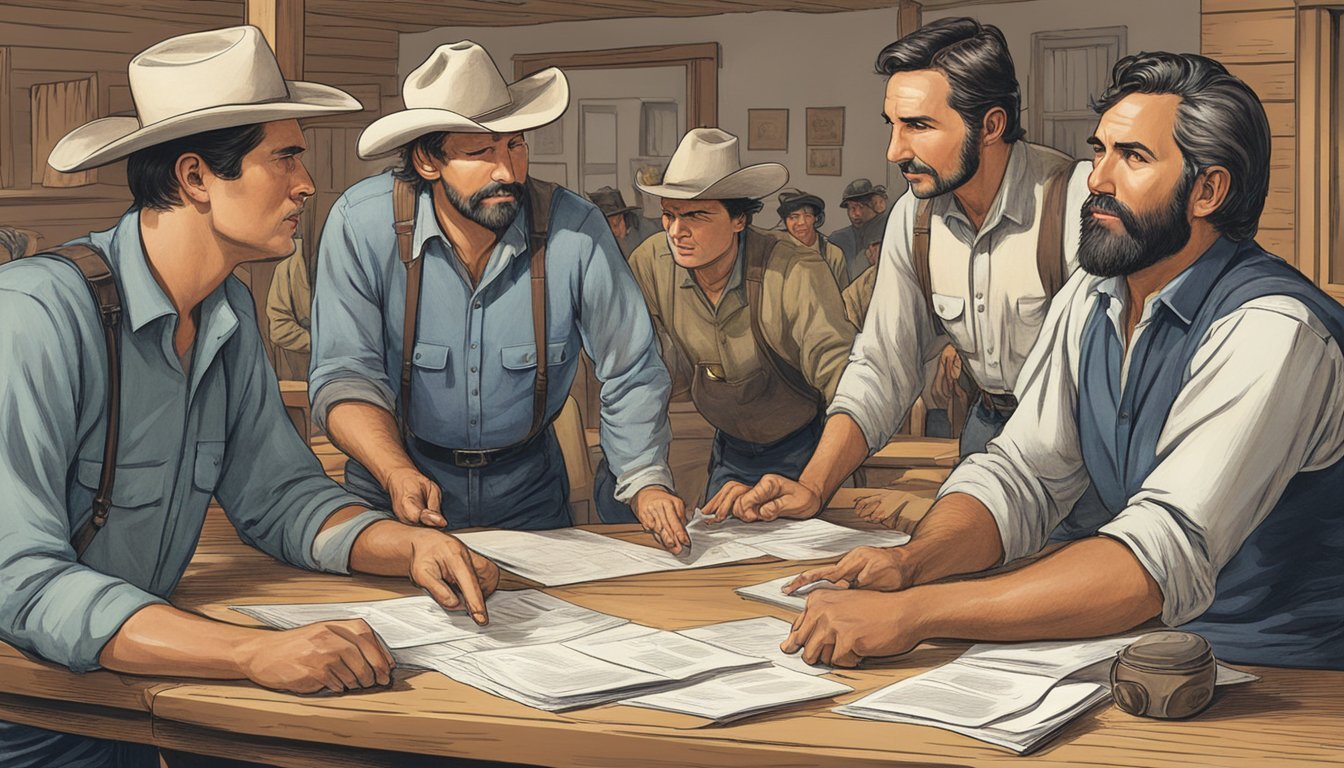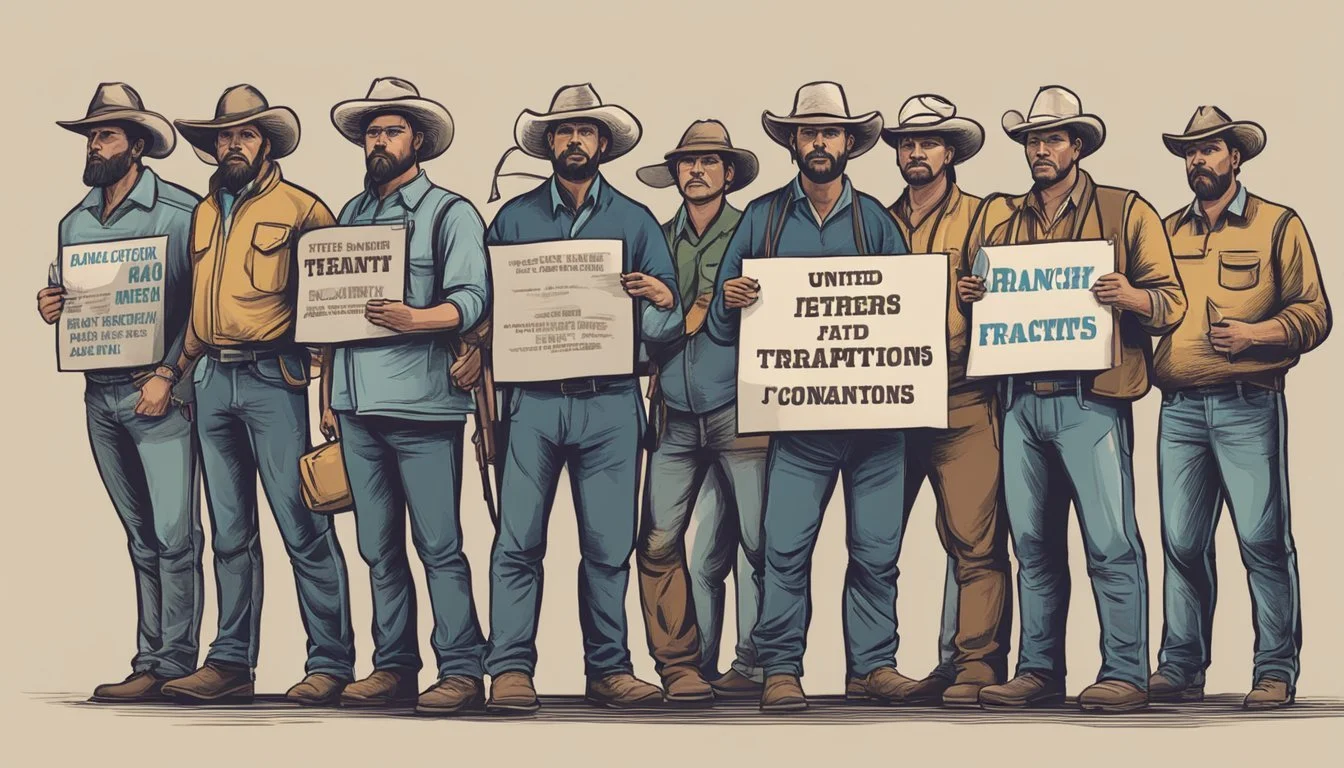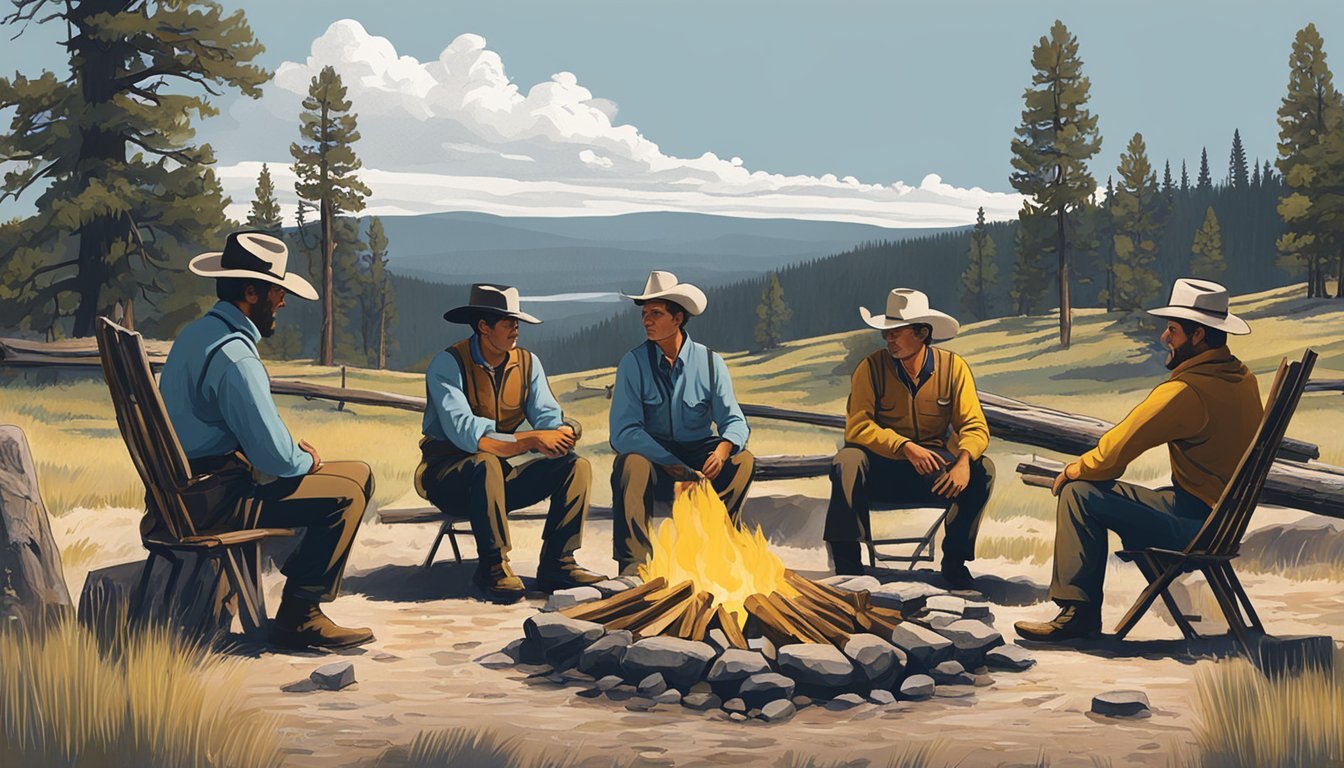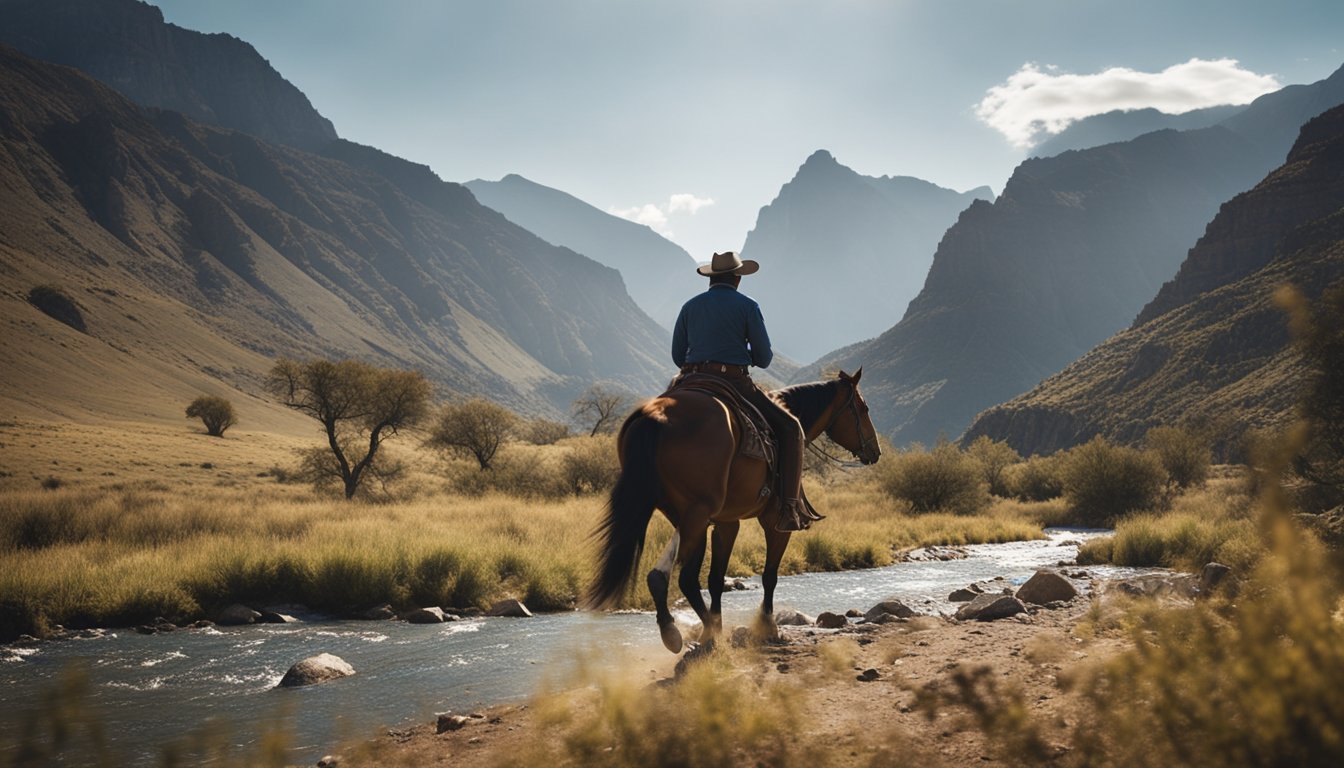Yellowstone's Ranch Hands Unite and Challenge Dutton Family's Power!
The ranch hands of Yellowstone Dutton Ranch have long been a crucial part of its operations, working tirelessly to maintain the sprawling property. These loyal employees face numerous challenges and risks in their daily duties. Their dedication to the Dutton family and the ranch is evident throughout the series.
If Yellowstone's ranch hands formed a union, it could dramatically alter the power dynamics on the ranch and potentially threaten the Dutton family's control. Such a move would likely lead to demands for better working conditions, higher wages, and increased job security. The ranch hands might gain more leverage in negotiations with the Duttons, potentially shifting the balance of power on the iconic property.
This hypothetical scenario raises intriguing questions about the future of Yellowstone Ranch. How would John Dutton and his family respond to unionization efforts? Would it spark conflict between the owners and workers, or could it lead to a more equitable arrangement? The implications for the ranch's operations and the broader narrative of the Paramount Network series would be significant.
Historical Context of Unionization in the American West
Labor organizing in the American West emerged alongside industrialization and changing economic conditions. Ranch workers faced unique challenges in unionizing due to the isolated nature of their work and traditional cowboy culture.
Early Union Movements
The late 19th century saw the rise of labor unions in the American West. In 1883, the Knights of Labor organized miners and railroad workers in frontier states. By 1923, the Industrial Workers of the World (IWW) had made inroads among agricultural laborers.
Unions struggled against powerful business interests and anti-labor laws. Many workers faced violence and intimidation for organizing efforts. Despite obstacles, unions achieved some successes in improving wages and working conditions.
Labor Relations on Ranches
Ranching traditions emphasized independence and self-reliance, often clashing with collective bargaining ideals. Cowboys typically worked in small teams, limiting opportunities for large-scale organizing.
Seasonal nature of ranch work posed challenges for maintaining union membership. Some ranchers used tactics like providing housing to discourage unionization.
By the early 20th century, some ranch hands joined general agricultural unions. These efforts met mixed success due to the unique aspects of ranch labor and strong anti-union sentiment in rural areas.
The Concept of Ranch Hand Unionization at Yellowstone Ranch
The idea of unionization at Yellowstone Ranch would fundamentally alter its structure and dynamics. This shift could impact loyalties, reshape power dynamics, and challenge long-standing traditions.
Implications for Loyalty and Trust
Unionization might strain the personal bonds between ranch hands and the Dutton family. The current system relies heavily on mutual trust and dedication. A union could introduce formal bargaining processes, potentially eroding the family-like atmosphere.
Ranch hands might gain improved working conditions and job security. However, this could come at the cost of the close-knit relationships they currently enjoy. John Dutton may view unionization as a betrayal, testing his leadership approach.
Loyalty, a cornerstone of ranch life, could be redefined. Union membership might supersede individual allegiances, creating a new collective identity among workers.
Modified Ranch Hierarchy and Leadership
A union would reshape the ranch's power structure. Rip Wheeler's role as foreman could evolve into a mediator between management and workers. His loyalty to John Dutton might be tested as he navigates new responsibilities.
Kayce Dutton's position could also shift. As a family member and former ranch hand, he might bridge the gap between union and management. This dual role could present unique challenges and opportunities for leadership.
Decision-making processes would likely become more formalized. Collective bargaining agreements could replace informal understandings, altering daily operations. The ranch's ability to respond quickly to challenges might be affected by new procedures and regulations.
Impact of Unionization on Dutton Ranch Operations
Unionization would significantly reshape the dynamics of Yellowstone Dutton Ranch. It would alter traditional roles and relationships while influencing modern ranching practices across the region.
Altering Ranch Workers' Roles
A union would redefine the roles of ranch hands at Yellowstone. Workers could gain more structured schedules, regulated hours, and standardized pay scales. This shift might challenge John Dutton's leadership style, requiring more formal management practices. Union representatives would likely negotiate for improved working conditions and safety measures.
Key changes could include:
• Defined job descriptions • Grievance procedures • Collective bargaining rights
These alterations may impact the close-knit "family" atmosphere of the ranch. The bunkhouse dynamics could evolve, with workers potentially feeling more empowered to voice concerns.
Influence on Modern Ranching Practices
Unionization at Yellowstone Ranch could set a precedent for the industry. Other ranches might face pressure to allow unions or improve worker conditions to remain competitive employers. This could lead to widespread changes in how ranches operate.
Potential industry-wide impacts:
• Increased labor costs • Standardized training programs • Enhanced worker retention strategies
Ranch operations may need to adapt, balancing traditional methods with modern labor practices. Herd cattle management could see changes, with stricter adherence to work hours affecting round-the-clock care. The iconic image of the cowboy lifestyle might evolve, integrating more regulated work environments.
Legal and Economic Aspects of Ranch Employees Forming a Union
Ranch workers unionizing would impact land ownership dynamics and the Dutton family's finances. Legal protections for organizing could clash with traditional ranch management practices.
Land Ownership and Labor Rights
The National Labor Relations Act protects employees' rights to form unions, including those working on large ranches like the Duttons'. Ranch hands could legally organize to negotiate better wages, hours, and working conditions. This could alter the power dynamic between the Dutton family and their employees.
Unionization might affect the Duttons' control over their vast property. Collective bargaining agreements could limit management's flexibility in assigning tasks or changing work schedules. The ranch's traditional hierarchies and practices may need to adapt to accommodate union rules.
Labor laws would require the Duttons to engage in good faith negotiations with any formed union. This process could reshape daily operations and long-term planning for the ranch.
Costs and Benefits for the Duttons
Unionized workers could demand higher wages and better benefits, increasing the Duttons' labor costs. This might strain the ranch's finances, especially during lean years or market downturns. The family may need to reassess their budget and resource allocation.
On the other hand, a union could potentially improve worker productivity and retention. Satisfied employees might be more loyal and efficient, benefiting the ranch's operations. Reduced turnover could save on training costs and maintain institutional knowledge.
Unionization could impact the Dutton Ranch's brand and public image. The iconic Dutton Ranch logo might take on new meanings in the context of labor relations. This shift could affect partnerships, land deals, and the ranch's standing in the local community.
Cultural and Familial Impacts
The formation of a union by Yellowstone's ranch hands would profoundly affect the ranch's cultural fabric and family dynamics. This shift would challenge traditional power structures and reshape relationships between the Duttons and their workers.
Shifts in Family and Worker Dynamics
Union formation would alter the paternalistic relationship between the Duttons and their employees. Beth Dutton's fierce loyalty to family interests might clash with workers' collective bargaining power. Jamie Dutton's legal expertise could be called upon to navigate new labor negotiations.
The ranch's hierarchical structure would face upheaval. Long-standing informal arrangements would give way to formalized contracts and procedures. This could strain personal bonds between the Duttons and trusted hands.
Workers might gain more autonomy and job security. However, the familial atmosphere of the ranch could diminish as roles become more defined and impersonal.
Preservation of Ranch Legacy versus Modernization Conflict
A union would challenge the Dutton family's traditional control over ranch operations. The century-old legacy of the Yellowstone Ranch would confront modern labor practices and worker rights.
John Dutton's vision of preserving the ranch's heritage might conflict with union demands for improved working conditions or wages. This tension could force the family to reassess their management style and priorities.
The ranch's culture of rugged individualism and cowboy ethos might clash with collective bargaining principles. Union formation could be seen as a threat to the romanticized notion of the American cowboy that the ranch embodies.
Modernization brought by unionization might help secure the ranch's future by attracting skilled workers. Yet, it could also erode the unique cultural identity that sets Yellowstone apart from corporate agricultural operations.
Comparison to Historical and Fictional Ranch Union Efforts
Ranch worker unionization has a complex history in the American West. Real-world examples and fictional portrayals offer insights into the potential dynamics of Yellowstone's ranch hands forming a union.
Real-World Precedents
Ranch workers in the United States have faced significant challenges in organizing labor unions. The 1935 National Labor Relations Act excluded agricultural workers, limiting their ability to unionize. Despite this, some efforts emerged.
In the 1960s and 1970s, the United Farm Workers union, led by Cesar Chavez, made strides in organizing agricultural laborers. While focused primarily on crop workers, their efforts highlighted the unique challenges faced by rural laborers.
Ranch hands, often isolated and dependent on their employers for housing, have historically struggled to organize effectively. The vast distances between ranches and the transient nature of cowboy work further complicated unionization efforts.
Union Dynamics in Western Genre
The Western genre, including works by Taylor Sheridan, often portrays ranch life as individualistic and resistant to collective action. Cowboys are typically depicted as fiercely independent, valuing personal freedom over group solidarity.
In fiction, ranch unions are rarely explored. When they appear, they're often portrayed as disruptive forces threatening traditional ways of life. The 6666 Ranch, featured in Yellowstone, exemplifies the idealized image of ranch work without union involvement.
Western narratives frequently emphasize the bond between cowboys and ranch owners, presenting a paternalistic relationship that discourages unionization. This portrayal reflects real-world challenges faced by ranch workers attempting to organize.
Public Perception and Media Representation
The Yellowstone series has significantly shaped public views on ranch unions and labor issues in the American West. Social media and journalism have amplified these perceptions, sparking debates about workers' rights in rural industries.
Influence of Yellowstone Series on Public Views
Yellowstone, airing on Paramount Network, has brought ranch life into millions of homes. The show's portrayal of ranch hands and their working conditions has sparked conversations about labor rights in agricultural settings. Kevin Costner's character, as the ranch owner, offers a complex view of management-worker dynamics.
Fans discuss potential unionization scenarios for Yellowstone's fictional ranch hands on social media platforms. This engagement reflects growing public interest in rural labor issues. The series' cultural impact extends beyond entertainment, influencing perceptions of real-world ranching practices.
Yellowstone merchandise featuring ranch hand characters has become popular. This further embeds the show's portrayal of ranch life in public consciousness.
Role of Social Media and Journalism
Social media platforms serve as hubs for discussions about ranch worker rights. Fans share opinions, creating a virtual community around the topic. These conversations often reference Yellowstone scenes, blending fiction with real-world labor issues.
Journalists have picked up on this trend, producing articles that examine real ranch working conditions. Some reports compare Yellowstone's portrayal to actual ranching practices. This media coverage educates the public on the realities of agricultural labor.
News outlets analyze the show's spinoffs for their depiction of worker issues. These discussions contribute to a broader dialogue about rural labor rights in America.
Environmental and Indigenous People Considerations
The unionization of Yellowstone's ranch hands could have significant implications for both Native American tribes and environmental issues in Montana. These complex factors intersect with labor rights and land management.
Impact on Native American Tribes
Chief Rainwater and the fictional Broken Rock Reservation would likely view ranch hand unionization with mixed feelings. A stronger workforce could potentially lead to more stable employment for tribal members working on the ranch. However, increased labor costs might reduce job opportunities or strain relations between the ranch and tribe.
Land rights disputes could intensify if unionized workers push for expansion or changes in land use. This may conflict with tribal efforts to reclaim ancestral territories. The union could become an unexpected ally or adversary in ongoing negotiations over land access and resource management.
Tribal leaders may seek to ensure any collective bargaining agreements respect indigenous customs and sacred sites on or near ranch lands. Cultural sensitivity training could become a union priority.
Environmental Concerns Tied to Unionization
A ranch hands union would likely advocate for safer working conditions. This could lead to improved environmental practices, such as proper handling of chemicals and waste management. Unionized workers might push for more sustainable ranching methods to protect Montana's ecosystems.
However, if higher labor costs drive expansion to maintain profits, this could increase grazing pressure on sensitive habitats. The union might resist conservation efforts that threaten jobs or limit ranch operations.
Collective action could give workers a stronger voice in environmental decisions. This may lead to more balanced approaches to land use, weighing economic needs against ecological concerns. The union could partner with environmental groups to promote responsible ranching practices.
Speculations on Future Developments
A unionized workforce at Yellowstone's Dutton Ranch could significantly alter its operations and future prospects. Changes may impact not only labor relations but also potential tourism opportunities.
Potential Outcomes of a Unionized Workforce
Ranch hands forming a union at Yellowstone could lead to improved working conditions and wages. This might attract more skilled workers, potentially enhancing the ranch's productivity. However, increased labor costs could strain the ranch's finances, especially given its struggles in recent seasons.
Union negotiations could influence storylines in Yellowstone Season 5 or a potential Season 5b. The Dutton family might face challenges balancing tradition with new labor demands. This conflict could provide compelling drama for the series finale, if one occurs.
Unionization might also affect the ranch's ability to adapt quickly to market changes or threats from external forces, a recurring theme in the show.
Prospects for Tourism and Merchandise
A unionized workforce could open new avenues for ranch tourism. Organized labor might push for diversifying income streams, potentially leading to guided tours or interactive experiences for visitors.
Yellowstone-branded merchandise could see expansion, with union involvement in product development or profit-sharing agreements. This could tie into the show's growing popularity and fan base.
Ranch tourism initiatives might feature in upcoming episodes, showcasing the Duttons' efforts to modernize while preserving their legacy. Such storylines could explore the tension between maintaining privacy and capitalizing on public interest in the iconic ranch.

